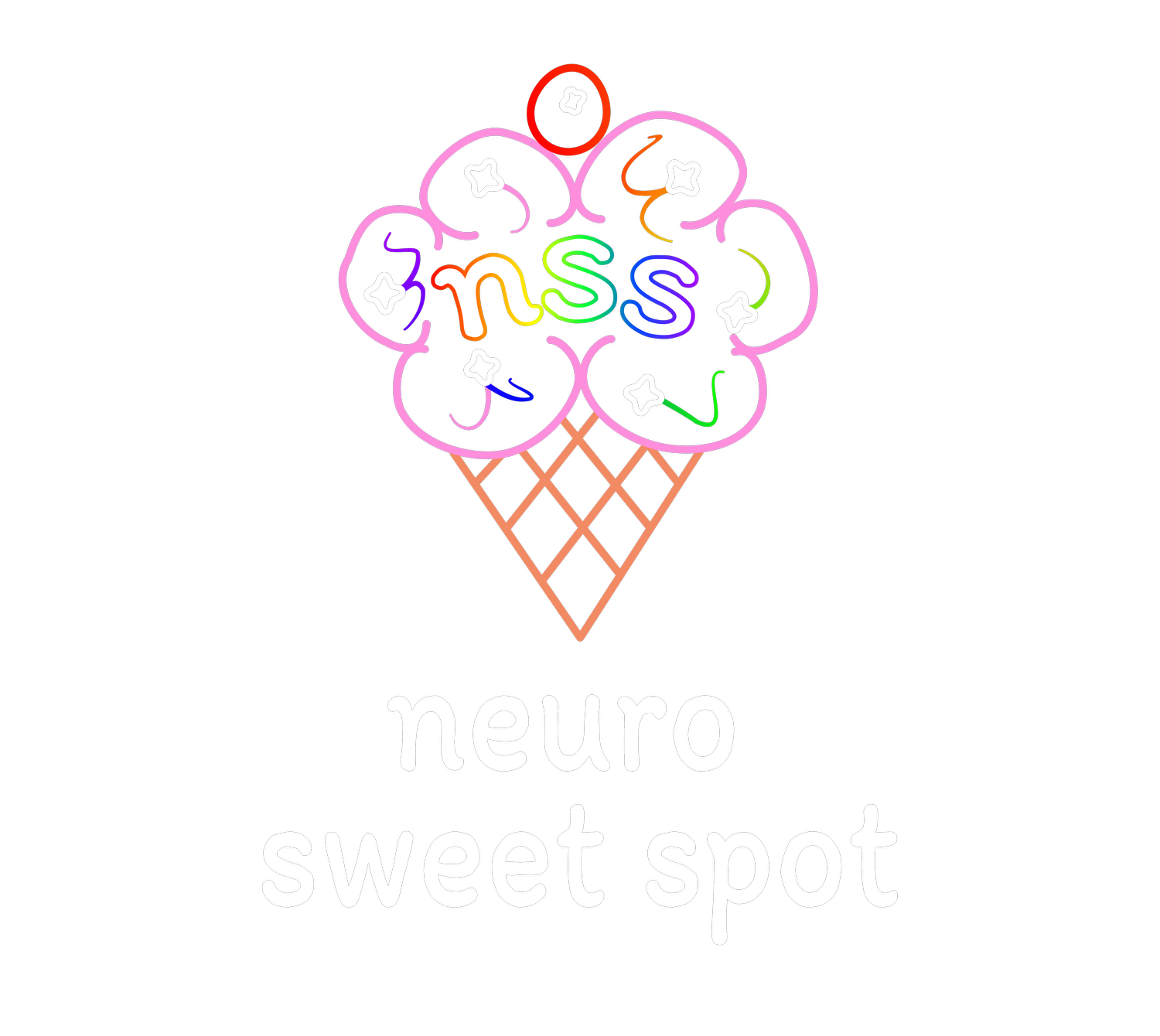
Neuro Spicy Masters
Resources, Insights, and Tips
Communicating with the Nervous System in Terms It Understands
(How to Speak the Brain’s Language for Balance and Regulation)
Your Nervous System Doesn’t Speak in Words—It Speaks in Sensations
When we feel stressed or overwhelmed, our instinct is often to think our way out of it. We try to rationalize, problem-solve, or tell ourselves to “just calm down.”
But here’s the catch: your nervous system doesn’t respond to logic first—it responds to physical cues.
If we want to regulate effectively, we have to speak in a language the brain actually understands:
✅ Movement (bilateral stimulation)
✅ Sensory input (engaging the five senses)
✅ Whole-brain activation (balancing logic and emotion)
1. Bilateral Stimulation: The Brain Loves Rhythm
Bilateral stimulation (BLS) means engaging both sides of the brain, bonus if it’s in a rhythmic, alternating way. This activates both hemispheres of the brain and encourages regulation.
🧠 Why does it help?
• The brain is divided into two hemispheres, and BLS creates whole-brain activation.
• It’s why walking, drumming, tapping, or even rocking side to side can feel grounding.
🌀 How to use BLS:
• Alternating taps on your legs, shoulders, or hands.
• Walking or pacing with an even, steady rhythm.
• Binaural beats (listening to tones in each ear).
• Chewing gum bilaterally (yes, even that can help!).
• The Itsy-Bitsy Spider Hand Motions (yes, that actually serves a brain training purpose!).
When in doubt, move in a rhythmic, left-right motion—it’s like a brain reset.
2. Activating the Prefrontal Cortex (Your Brain’s Captain)
The prefrontal cortex (PFC) is the part of your brain responsible for:
🧩 Logical thinking
🗂️ Planning & decision-making
🚦 Impulse control
🌀 Emotional regulation
But when we’re stressed, the PFC goes offline—which is why problem-solving feels impossible in high-stress moments.
💡 How to bring it back online:
🔢 Do mental math (count backward from 100 by 7s).
📋 List things (“Name all the green foods you can think of!”).
🎭 Repeat a pattern (clap rhythms, trace shapes in the air).
🗣️ Engage in conversation that requires thinking, not just reacting.
When your brain is spinning out, give it a structured task—this re-engages the thinking brain and calms the reactive brain.
3. Engaging the 5 Senses to Rebalance
The nervous system regulates through sensory input, not just thoughts.
A quick 5-sense reset can help bring you back to balance:
👀 Sight: Focus on a calming object, look at something symmetrical, or watch slow movements.
👂 Sound: Listen to music, white noise, or hum softly to yourself.
🤲 Touch: Squeeze a textured object, run your hands under water, or press your feet firmly into the floor.
👅 Taste: Sip cold water, chew gum, or eat something with a strong flavor (mint, citrus, etc.).
👃 Smell: Use essential oils, sniff coffee beans, or breathe in fresh air.
Engaging multiple senses at once (like listening to music while rocking in a chair) amplifies the regulation effect.
4. Why Stress Separates the Brain—and How to Reconnect It
When we’re in distress, the brain splits into two modes:
🧠 Left Brain → Logic, language, problem-solving.
❤️ Right Brain → Emotion, sensory experience, memories.
This is why, when someone is overwhelmed or in crisis, they might struggle to put their emotions into words.
Trauma and distress often get “stuck” in the right brain, disconnected from language and logic.
💡 How to reconnect the two sides:
✔️ Name the feeling (activates the right brain). Then describe it in words (activates the left brain).
✔️ Write about an emotional experience instead of just thinking about it.
✔️ Express emotions physically (drawing, movement) before trying to talk them through.
✔️ Use bilateral stimulation (tapping, pacing) while processing emotions to bridge the gap between logic and feeling.
Getting the whole brain online makes it easier to process emotions instead of just reacting to them.
5. Whole-Brain Activation = Feeling Balanced
When both hemispheres of the brain are engaged, we feel more clear-headed, present, and regulated.
🎭 Whole-brain activation strategies:
✅ Cross-body movements (touch opposite knee to elbow, stretch across midline).
✅ Patterned activities (knitting, drumming, dancing).
✅ Creative play (puzzles, games, art).
✅ Multisensory engagement (listening to music while walking and chewing gum).
The more we activate both sides of the brain together, the easier it becomes to shift out of stress.
6. Yawning: The Body’s Reset Button
Yawning isn’t just about being tired—it’s actually a nervous system cue.
🌀 Yawning signals a shift toward parasympathetic (rest & digest) mode.
• It encourages deep breathing.
• It activates the vagus nerve (which promotes relaxation).
• It resets the nervous system after stress.
✨ Try this:
• Fake a few yawns—this often triggers real yawns and deeper breathing.
• Stretch your jaw and face muscles—this stimulates relaxation pathways.
Yawning before bed, after a deep conversation, or during meditation can actually help reinforce nervous system regulation.
Key Takeaways
🔹 Your nervous system responds to movement, rhythm, and sensory input—not just thoughts.
🔹 Bilateral stimulation and whole-brain activation help bring you back into balance.
🔹 When overwhelmed, the brain separates language and emotion—reconnecting them is key.
🔹 Yawning, deep breathing, and engaging the senses help cue the body toward regulation.
The more we work with our nervous system (instead of against it), the more resilient we become. Understanding how to “speak” its language makes regulation faster, easier, and more effective.

